Gadolinite
Gadoliniet, Gadoliniit, Gadoliniitti, Gadolinit, Gadolinita, Gadolinitas, Ytterbit, Ytterbita, Yttersten,
גדוליניט,
Гадолинит, 가 돌리 나이트,
กาโดลิไนต์, ガドリン石,
硅鈹釔磺
Commonly known
rarer (so called collectors stones)
very rare (rarities)
relatively rare organic material
|
Formula:
(Ce,La,Nd,Y)2Fe2+Be2Si2O10
Two different gadolinites do exist: Gadolinite-(Ce) with more Cerium, Gadolinite-(Y) with more Yttrium. Mineral class: silicates Crystal system: monoclinic Mohs scale: 6.5 - 7 Density (g/cm3): 4.36 - 4.77 Refractive index: 1.78 Cleavage: - Colors: colorless, tan, brown, green, black Transparency: translucent Luster: vitreous Fluorescence: - Pleochroism: - Largest crystal: 2 cm? Deposits: Austria, Germany, Italy, Japan, Norway, Russia, Sweden, USA Discovery: 1788 1st Description: 1794 (Gadolin) Name: in honor of the Finnish mineralogist Johan Gadolin (1760 - 1852) If the mineral contains Thorium, it is radioactive |
|
Gadolinite-(Y) Mineral
Image width: 0.3 cm Origin: Furka basis tunnel / Oberwald / Goms / Wallis / Switzerland Photo by kind permission of © Stephan Wolfsried |
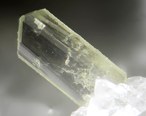 |
|
Gadolinite-(Y) Mineral
Size of the crystal: 0.07 cm Origin: Hopffeldboden / Obersulzbachtal Valley / Hohe Tauern Mts. / Salzburg / Austria Photo: Enrico Bonacina, by kind permission of © Domenico Preite |
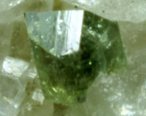 |
|
Gadolinite-(Ce) Mineral
Size of the crystal: 0.17 cm Origin: Washington Pass / Okanogan County / Washington / USA Photo by kind permission of © Saul Krotki |
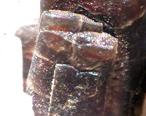 |
|
Gadolinite-(Y) Mineral
Size: 5.3 x 4.8 x 1.9 cm Origin: Hidra (Hitterø) / Flekkefjord / Vest-Agder / Norway Photo by kind permission of © www.irocks.com |
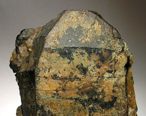 |
|
Gadolinite-(Y)
Size: 1.34 x 1.05 cm Weight: 9.41 ct Origin: Norway Photo by kind permission of © Darlene Cobler |
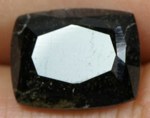 |
⇐ Intro Page ⇐ Gemstones